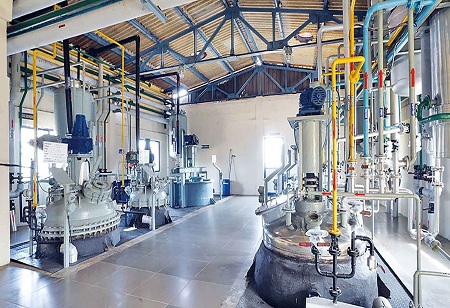Manufacturing of Active Pharmaceutical Ingredients (APIs) is a critical step in the production of pharmaceutical drugs. It demands a composite process of synthesis and formulation. Numerous challenges must be overcome in this phenomenon. These encompass the need for stringent quality control and cost-effectiveness, as well as the need to comply with regulatory requirements. APIs serve as the vital therapeutic components that provide the desired pharmacological effect. APIs are, therefore, an essential component of any drug developmentprocess and must be monitored to ensure safety and efficacy. The manufacturing process of APIs can be optimized to ensure premium quality products.In this article, we will see focus on the three primary challenges and discuss potential solutions toovercome them.
Regulatory Compliance and Quality Control
Adhering to stringent regulatory standards and ensuring quality control throughout the production process is one of the few significant challenges in the production of APIs.Manufacturers must comply with stringent regulations set forth by regulatory agencies like the European Medicines Agency (EMA) and the U.S. Food and Drug Administration (FDA) to ensure consistency, safety, and efficacy of APIs. Manufacturers must invest in sturdy quality management systems and implement Good Manufacturing Practices to tackle this challenge(GMP). The controls, methodologies, and documentation needed to guarantee product quality and regulatory compliance are outlined in GMP guidelines. Maintaining compliance effectively requires critical aspects like conducting periodic audits, keeping thorough records, and validating manufacturing procedures. In particular, HPLC is used to detect trace impurities such as residual solvents in the API, while mass spectrometry helps to accurately identify and quantify the content of the API.
Process Optimization and Scale-up
The successful scaling up of the production process from the laboratory scale to the commercial scale presents another significant challenge in the production of APIs. The initial laboratory-scale synthesis may be efficient, but replicating the same results on a larger scale poses technical and logistical hurdles. Factors such as reaction kinetics, heat transfer, mass transfer, and mixing become increasingly complex as the scale of production increases. To address this challenge, manufacturers can employ process analytical technology (PAT) and automation. PAT involves the use of real-time monitoring techniques, such as spectroscopy and in-line sensors, to ensure process control and timely intervention. By continuously monitoring critical process parameters, manufacturers can identify and rectify any deviations, ensuring consistent API quality. Automation, including robotic systems, can streamline repetitive tasks, minimize human error, and improve overall process efficiency. For example, PAT can be used to monitor the reaction temperature, pressure, and other parameters during the synthesis of an API, and alert operators when the process begins to drift from the desired conditions. Collaboration with research institutions and contract manufacturing organizations (CMOs) also plays a vital role in process optimization and scale-up. CMOs bring expertise in large-scale manufacturing and can provide valuable insights to optimize the production process. Additionally, the collaboration allows manufacturers to leverage specialized equipment and facilities, reducing capital investments required for scaling up.
Supply Chain Complexity and Raw Material Sourcing
The manufacturing of API faces a substantial challenge as a result of the complexity of the global pharmaceutical supply chain. Many APIs are sourced from multiple suppliers and intermediates, making the supply chain vulnerable to disruptions, such as natural disasters, regulatory changes, or geopolitical issues. Ensuring a consistent and reliable supply of high-quality raw materials is crucial for uninterrupted production. For instance, the US Food and Drug Administration (FDA) requires drug manufacturers to ensure that the materials used in creating their APIs are sourced from suppliers that conform to Good Manufacturing Practices (GMP). To mitigate supply chain risks, manufacturers can adopt dual-sourcing strategies, which involve identifying multiple qualified suppliers for critical raw materials. This strategy provides an alternative source in case of any disruption. Manufacturers can also explore local sourcing options or backward integration by establishing their own raw material manufacturing capabilities. By reducing dependence on external suppliers, companies gain greater control over the supply chain and mitigate risks associated with raw material availability. For instance, a company might develop a relationship with a new supplier in the event of disruption from the primary supplier, and use supplier audits to evaluate the quality of the products purchased.Ultimately, by implementing stringent quality management systems, leveraging advanced technologies, collaborating with CMOs, and adopting robust supply chain strategies, manufacturers can overcome these challenges and ensure the consistent production of high-quality APIs. Quality management systems ensure that all the steps of the manufacturing process are carefully monitored and controlled. Robust supply chain strategies ensure that raw materials and components are sourced from reliable suppliers and delivered on time. Together, these efforts contribute to the development of safe and effective pharmaceutical drugs for the well being of patients worldwide.
